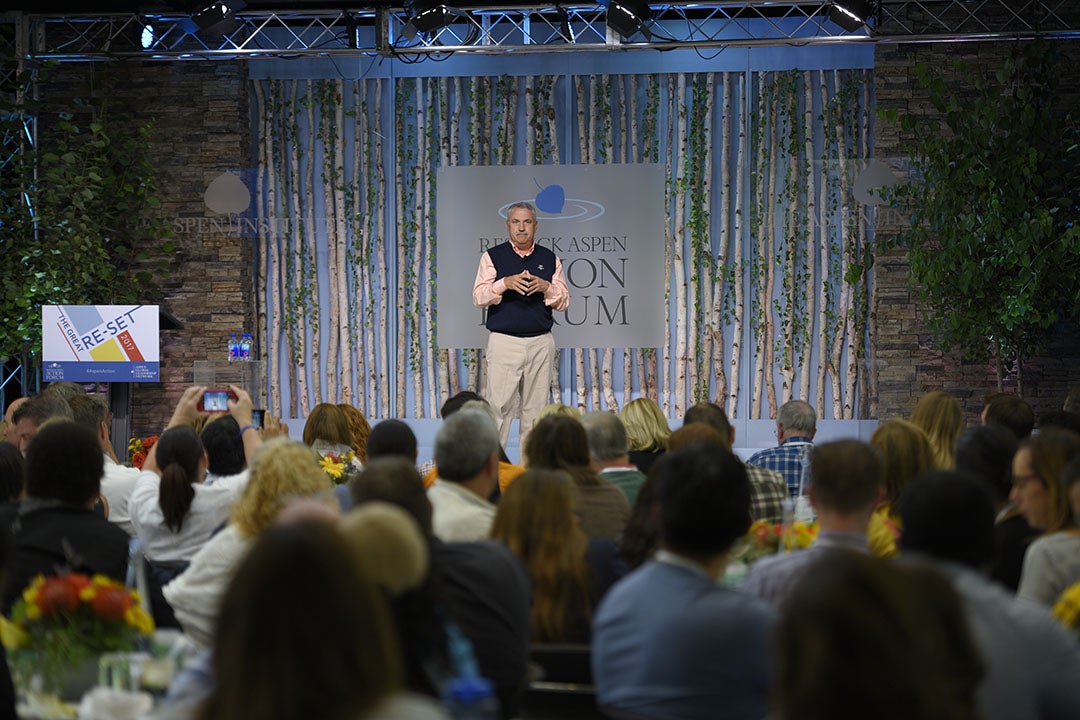Growing up, Ruth Bader Ginsburg was greatly influenced by her mother. Not only did her mother teach her how to read and write, she also taught her how to form her own ideas independently. Now an associate justice of the Supreme Court, Ginsburg has established herself as both a free thinker and a fierce advocate for human rights. She joined the Resnick Aspen Action Forum to share a review of the Court’s recently completed 2016 term.
Eric Motley, Executive Vice President of Institutional Advancement at the Aspen Institute, described Justice Ginsburg as “a woman for all seasons.” As one of the most recognizable women in government, she told the audience that she feels privileged to help make decisions that affect everyday citizens around the country.
“I consider myself tremendously fortunate because the kind of things I have said are things women have been saying forever,” Ginsburg told the crowd. “But earlier societies were not yet prepared to listen.”
Although society has progressed since then, we still have a long way to go when it comes to equity. Justice Ginsburg herself is quick to mention that she has been on the losing side of such decisions more than once.
“But sometimes a defeat can end up being a huge victory,” Ginsburg said. “I was in that fortunate position in the Lily Ledbetter case.” The Court had ruled against Ledbetter due to the majority’s interpretation of Title VII’s statute of limitations. While she believed an egregious mistake had been made, Justice Ginsburg left it up to Congress to correct the error. This led to the creation of the Lily Ledbetter Fair Pay Act, a law prohibiting sex-based wage discrimination. It was the first act signed by then-President Barack Obama.
Justice Ginsburg believes that the Court’s upcoming term will be momentous. The most important case, she said, is Gill v. Whitford, in which the Court will determine whether partisan gerrymandering violates the Constitution. Although she has sometimes found herself at odds with her colleagues, Justice Ginsburg said that unanimity on the court was substantially higher than sharp disagreement.
During her tenure, Justice Ginsburg has seen, inspired, and been a part of many great re-sets. Flanked by Justice Sotomayor to her left and Justice Kagan on her right, Ruth Bader Ginsburg proves that the women of the Supreme Court will continue to make history while shaping the future.


